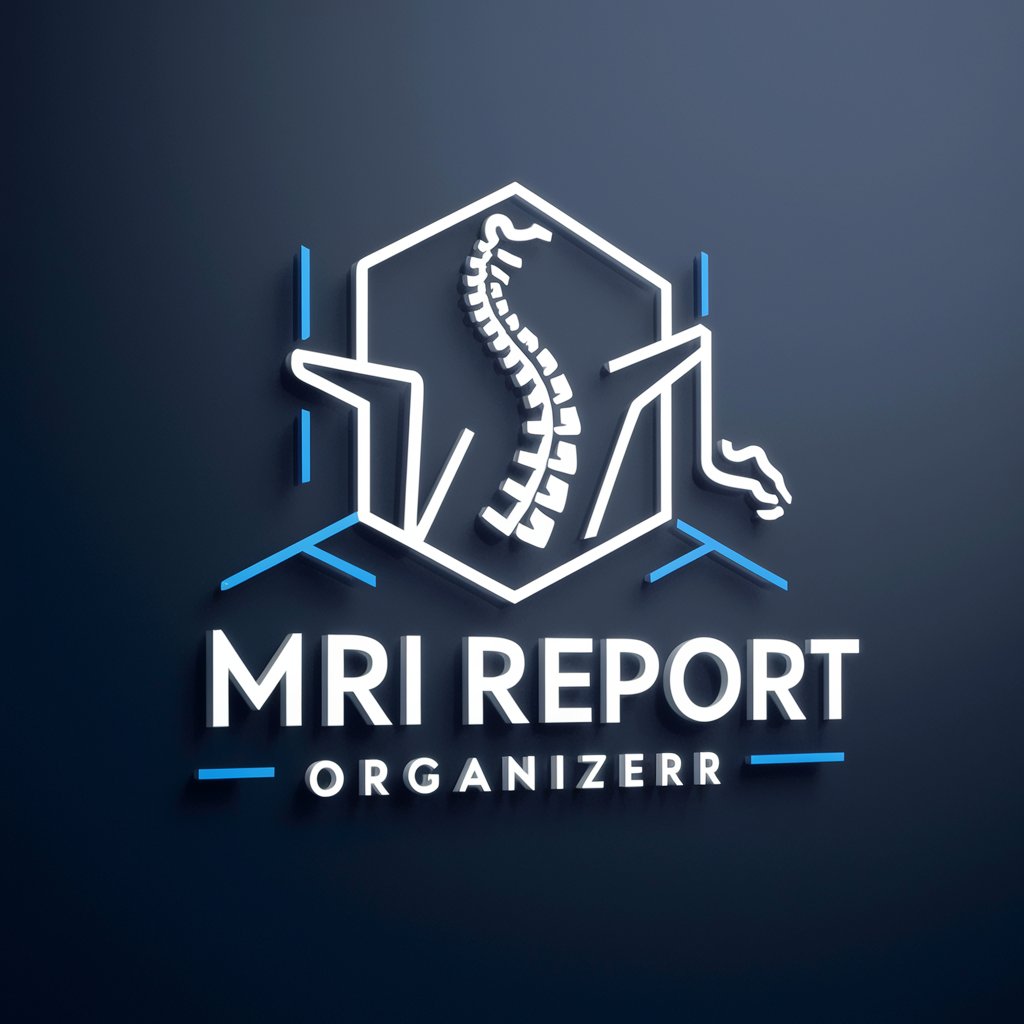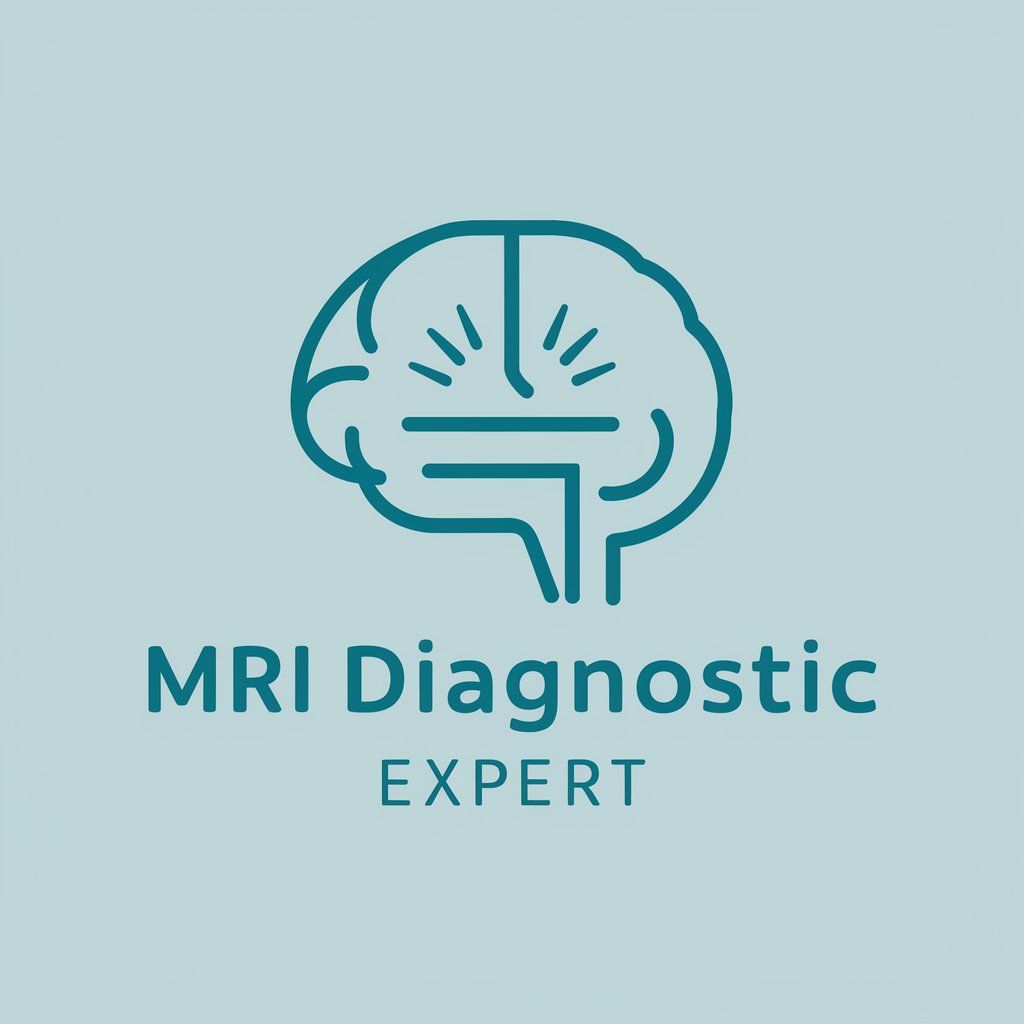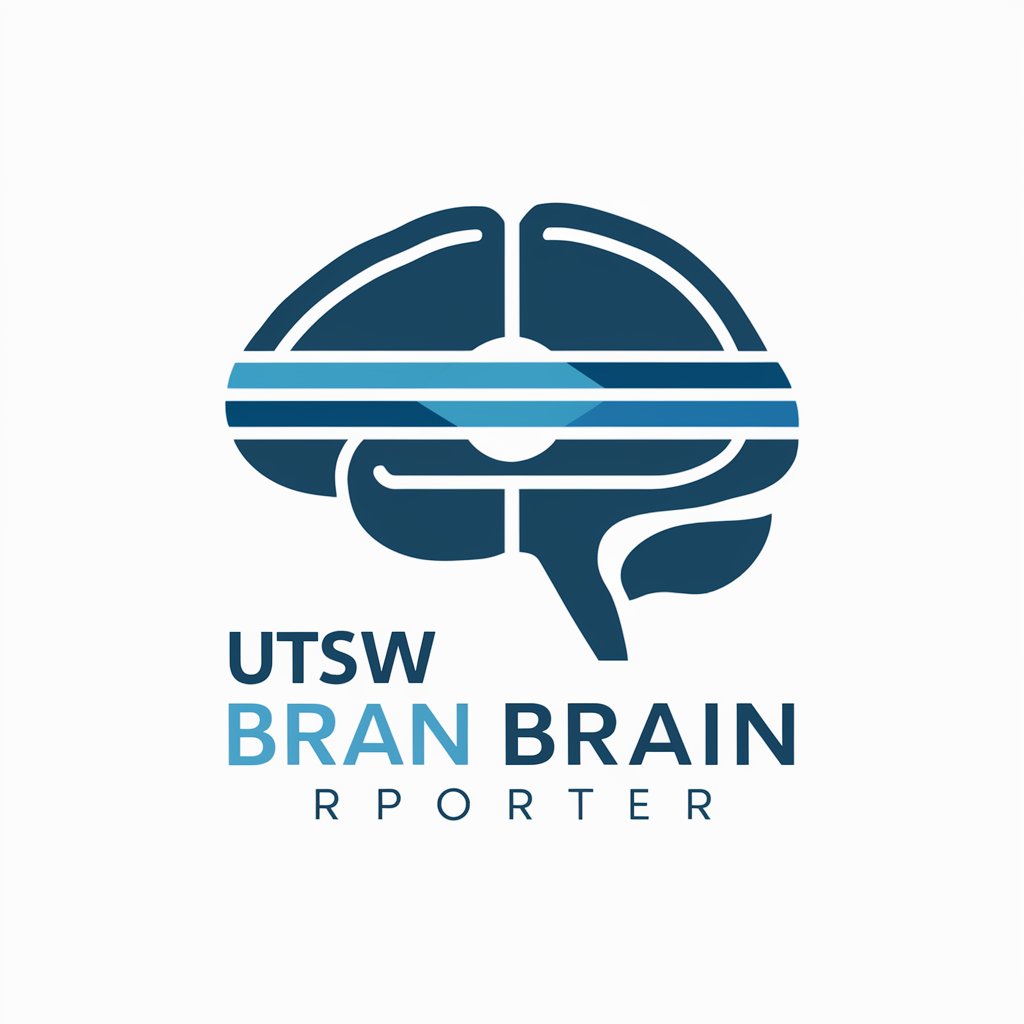
MRI Spine and Limbs - MRI Report Summarization

Welcome to MRI Report Organizer. Focused on your key MRI findings.
AI-driven MRI report insights
Extract key findings from the following highlighted MRI report:
Summarize the highlighted sections of this spine MRI report:
Analyze the yellow-highlighted portions of this limb MRI report and provide a summary:
Detail the most significant findings from the highlighted parts of this MRI report:
Get Embed Code
Introduction to MRI Spine and Limbs
MRI Spine and Limbs is a specialized AI-powered tool designed to assist in the analysis and organization of MRI reports, focusing specifically on the spine and peripheral limbs. Its core functionality revolves around prioritizing and interpreting highlighted (yellow-highlighted in reports) findings within MRI reports. This tool uses advanced algorithms to extract and condense crucial information from these reports, presenting them in a concise, paragraph format where each fact is clearly separated by periods. For spinal MRIs, it emphasizes the extraction and summarization of critical findings such as facet joint pathology, vertebral body pathology, central canal and foraminal narrowing. For peripheral limb images, it focuses on joint pathology, soft tissue pathology, and other significant findings. The design purpose behind MRI Spine and Limbs is to streamline the review process of MRI reports for medical professionals, providing them with a quick, efficient way to grasp the most relevant pathological findings. Powered by ChatGPT-4o。

Main Functions of MRI Spine and Limbs
Highlight extraction and analysis
Example
Automatically identifying and extracting yellow-highlighted sections from MRI reports to prioritize significant findings.
Scenario
In a clinical setting where a radiologist has multiple reports to review, MRI Spine and Limbs can quickly extract and summarize the critical highlighted findings, enabling the radiologist to immediately focus on areas of concern.
Pathology summarization
Example
Providing concise summaries of facet joint pathology, vertebral body pathology, central canal narrowing, and foraminal narrowing for spinal MRIs; and joint pathology, soft tissue pathology, and other findings for limb MRIs.
Scenario
A healthcare provider assessing a patient for potential surgical intervention might use MRI Spine and Limbs to quickly gather all relevant pathological findings from the MRI report to support decision-making.
Report organization
Example
Organizing and presenting the findings in a structured, easy-to-read format, focusing only on positive (abnormal) findings and omitting normal findings to avoid information overload.
Scenario
A multidisciplinary team meeting where specialists discuss a complex case. MRI Spine and Limbs allows for efficient communication of MRI findings, facilitating a focused discussion on treatment options.
Ideal Users of MRI Spine and Limbs Services
Radiologists
Professionals who interpret MRI images and write reports. They would benefit from MRI Spine and Limbs by having a streamlined process for highlighting critical findings, potentially reducing reporting time and improving accuracy.
Orthopedic Surgeons
Surgeons specializing in disorders of the bones, joints, ligaments, tendons, and muscles. They can use the tool to quickly assess the severity and specifics of musculoskeletal pathologies, aiding in surgical planning and patient management.
Neurologists
Specialists who treat disorders of the nervous system, who could utilize MRI Spine and Limbs for a rapid assessment of spinal cord and nerve pathologies, enhancing diagnostic accuracy and treatment strategies.
Physical Therapists
Therapists can leverage the tool to understand the anatomical and pathological basis of a patient's symptoms, facilitating the development of targeted rehabilitation programs.

How to Use MRI Spine and Limbs
1
Start with a visit to yeschat.ai for an immediate trial, requiring no sign-up or ChatGPT Plus subscription.
2
Upload the MRI report of the spine or limbs you wish to analyze. Ensure the text is clear and the highlighted sections are visible.
3
Specify the type of analysis needed (spine or limb) to help focus the examination on the relevant anatomical area.
4
Review the automatically generated summary, which focuses on positive findings highlighted in the report, for quick and efficient insights.
5
Use the structured insights for further medical consultation, research, or academic purposes. Remember, this tool is an aid and not a replacement for professional medical advice.
Try other advanced and practical GPTs
Shiny Helper
Empowering R Shiny Apps with AI

Spine Insight
Empowering Research with AI Insights

Profile Shiner
Empower Your Career with AI

Marge and Mildred
Diverging Views, Unified Intelligence

Elite Rugby Fitness and Nutrition Coaching Team
Optimize your rugby performance with AI

BB9.ai Coaching Offer Builder
AI-powered Coaching Offer Transformation

Expert in Shiny for R
Empowering Shiny developers with AI-driven guidance.

Tennis ProTac
Elevate your game with AI-driven tennis tactics.

Shorts Wizard
Elevate Your Shorts with AI

UTubeGuru (Marketing & Content Creation Expert)
Elevating YouTube channels with AI-driven insights

Video Chatbot
Unlocking YouTube content with AI

Logo Maker
Craft Your Identity with AI-Powered Logo Maker

Frequently Asked Questions about MRI Spine and Limbs
What makes MRI Spine and Limbs different from other medical AI tools?
MRI Spine and Limbs specializes in analyzing MRI reports of the spine and limbs, focusing exclusively on positive findings, particularly those highlighted in the report, for a quick and efficient overview.
Can MRI Spine and Limbs diagnose medical conditions?
No, MRI Spine and Limbs provides a summary of key findings from MRI reports. It is intended as a tool to aid understanding and discussions with healthcare professionals, not for making diagnoses.
How accurate is MRI Spine and Limbs in analyzing MRI reports?
While MRI Spine and Limbs is designed to accurately identify and summarize highlighted findings in MRI reports, its accuracy depends on the clarity of the report and the highlights. It's a supplement to, not a substitute for, professional analysis.
Is MRI Spine and Limbs suitable for educational purposes?
Yes, MRI Spine and Limbs can be a valuable educational tool, offering insights into MRI report analysis and helping students understand the significance of positive findings in these reports.
Can I use MRI Spine and Limbs for limb MRI reports?
Absolutely, MRI Spine and Limbs is equipped to analyze MRI reports of both the spine and limbs, providing detailed summaries focused on the areas of interest highlighted in the reports.




